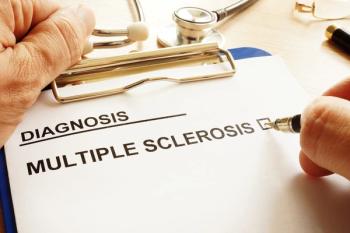
Subcutaneous Ocrelizumab Well Tolerated in Patients With MS
Key Takeaways
- Subcutaneous ocrelizumab (SC OCR) maintains a safety profile similar to intravenous administration in multiple sclerosis patients.
- A 920 mg SC OCR dose was identified as optimal, with mild to moderate localized injection reactions as common adverse events.
Subcutaneous ocrelizumab (SC OCR) was found to be safe for patients with relapsing and primary progressive multiple sclerosis (RMS/PPMS).
Subcutaneous ocrelizumab (SC OCR) was consistent with the well-established safety profile of OCR administered intravenously (OCR IV) in patients with relapsing and primary progressive
“Twice-yearly SC injection of OCR, administered in approximately 10 min, may offer an additional treatment option for patients with RMS and PPMS and the potential for different sites of care,” the authors wrote.
The 920 mg SC OCR dose was determined optimal for the next phase of the Phase 1b, open-label, multicenter study, which evaluated 135 patients who had either previously received OCR IV (n = 88) at least 1 year prior to screening via two doses of OCR 600 mg separated by 24 weeks, or who were naive to OCR treatment (n = 47).
Each patient received successive single doses of up to 1200mg of subcutaneous ocrelizumab. Localized injection reactions were the most common adverse events (AEs) in doses up to 1200 mg OCR SC. Most of these events were mild to moderate and did not require treatment.
Next, the cohort that had prior OCR IV treatment was randomly assigned to receive either OCR SC or an intravenous dose of 600mg of ocrelizumab. Injection reactions decreased as OCR SC increased. The 2 groups showed similar rates of B-cell eradication, and notreatment-emergent antidrug antibodies were found for either SC or IV administration of OCR.
The 3 patients discovered to possessantibodies to recombinant human hyaluronidase PH20 (rHuPH20) exhibited no safety issues.
Patients preferred OCR SC over OCR IV, and healthcare professionals reported OCR SC to be more convenient compared with OCR IV.
Researchers used a manual syringe or a syringe pump to inject the OCR and rHuPH20 beneath the skin of the stomach. The final rHuPH20 concentration was 1000 U/mL.The rHuPH20 helps remove blockage from Glycosaminoglycan hyaluronan, which forms a viscous substance, to enable quick SC delivery.2
Nearly three-quarters of patients, aged 18-65 years, were female. Mean age at baseline was 46 years for women and 40 years for men. Enrollment began in 2019.1
The study began with a screening period of up to 5 weeks. Researchers then increased dosing to determinepharmacokinetic bridging, safety and tolerability, and immunogenicity. After a continuation period, follow-up was conducted to evaluate safety.
Patients included in the study were required to have an Expanded Disability Status Scale (EDSS) score of 0.0–6.5 (inclusive) at screening and to have had no relapses for 30 days prior to the screening visit.Patients who had suffered severe allergic reactions in the past, or who were recorded as having suffered anaphylactic reactions to humanized or murine monoclonal antibodies were excluded from the study. Patients were excluded from the cohort that had never received OCR treatment if their records included prior B-cell-targeted treatment (OCR, rituximab, atacicept, belimumab, or ofatumumab).
100 mg of IV methylprednisolone was administered to the group that received OCR IV half an hour prior to the infusionin order to reduce the possibility of an infusion-related reaction. To this same end, antihistamine was given orally or via IV 30 minutes to 1 hour before each infusion.
“Ocrevus Zunovo™ has unique qualities that make it a great treatment option for many people living with MS. It is a quick and infrequently administered treatment that is very effective and well-tolerated,” lead author Scott Newsome told the American Journal of Managed Care®.“It offers patients another treatment option for their MS and where it can be administered is flexible including in an infusion center, doctor's office, or within a person’s home. Importantly, the patients' experience within the clinical trial program was overwhelmingly positive from administration to lack of side effects.”
References
- Newsome SD, Goldstick L, Robertson DS, et al. Subcutaneous ocrelizumab in multiple sclerosis: Results of the Phase 1b OCARINA I study. Ann. Clin. Transl. Neurol. 2024. doi: 10.1002/acn3.52229
- Knowles SP, Printz MA, Kang DW, LaBarre MJ, Tannenbaum RP. Safety of recombinant human hyaluronidase PH20 for subcutaneous drug delivery. Expert Opin Drug Deliv. 2021; 18: 1673-1685. doi: 10.1080/17425247.2021.1981286
Newsletter
Stay ahead of policy, cost, and value—subscribe to AJMC for expert insights at the intersection of clinical care and health economics.











































